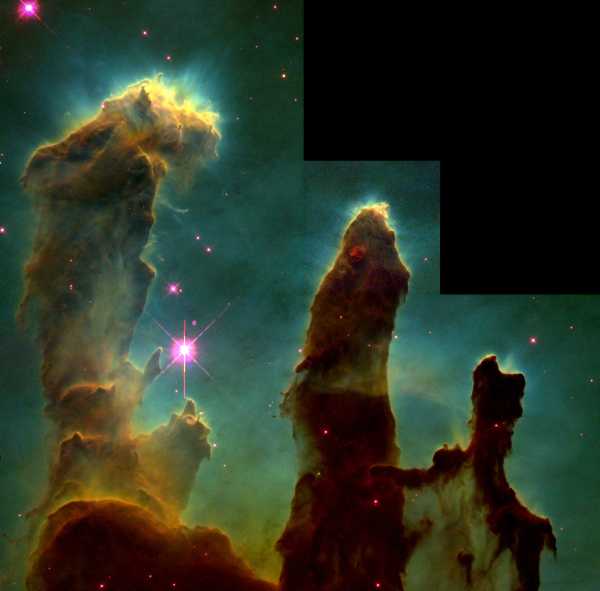“The whole difference between construction and creation is exactly this: that a thing constructed can only be loved after it is constructed; but a thing created is loved before it exists.” -Charles Dickens
Just... go. I can't even do it justice in a synopsis, or with 600 pixel image widths.
This was the original.
More like this
“The history of astronomy is a history of receding horizons.” -Edwin Hubble
"There’s no difference between a pessimist who says, “Oh it’s hopeless, so don’t bother doing anything.” and an optimist who says, “Don’t bother doing anything, it’s going to turn out fine anyways.” Either way, nothing happens." -Yvon Chouinard
"We especially need imagination in science. It is not all mathematics, nor all logic, but it is somewhat beauty and poetry." -Maria Montessori


Triple wow indeed. The infrared images are even more haunting.
"Advances in instrumentation"
I'd love to read about that. Now I just need to reform this as a question, so it's eligible for question of the week.
...
When I first read about the Hubble Deep Field imagery, I read up on how they combined the large number of exposures over time into a scientifically accurate image. How has the math and technique advanced since that time? What more information are we able to gather based on these advances?
Looks to me like more computer generated fantasy. Picture it if you will.......telescope supposedly focused on a point multiple trillions of miles away while the earth is supposedly spinning in orbit around the sun at some scientifically calculated speed....while our sun is orbiting our galaxy at an even greater velocity away from that fixed point in only God knows which direction......collecting light from an area of the sky we assume the stars to be in??? That's almost as bad saying the earth is spinning at over a thousand miles a hour and you can't feel it. Next they will say the moon has gravity because it doesn't spin.
Poster from 07 January. Thanks for your interest and post here. The value of science blogs such as this one is that it clarifies scientific concepts to laypersons. If a reader has enough curiosity, they will find blogs such as this quite edifying. Please continue with your questions. It's the beginning of true education. Cheers
Hopefully not silly questions...
How do you determine if the stars in these photos are actually interacting within the region as opposed to those that are shinning through it?
I wish there was a way to rotate the image in 3D. Is there?
Hipparchos managed to get a lot more accurate a parallax, giving genuinely rigorous definition of their distance.
Before that, as well as parallax you have the movement of the stars against known very distant stars, called "proper motion", and if stars have the same approximate distance and same proper motion, they're considered in the cluster.
And approximate distance to the nebula is known by similar reasoning, if often less accurate because it is an extended object without a hard border.
Ah, what a time to be alive!